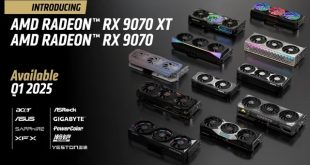In recent years, the display industry has seen tremendous growth, with manufacturers racing to develop new technologies to cater to the diverse needs of consumers. One such technology that has been gaining traction in the mobile device space is IGZO (Indium Gallium Zinc Oxide). The semiconducting material has been known for its power efficiency compared to standard IPS panels, which is why Sharp has used it in its displays since 2012. However, despite its benefits, there hasn't been much interest from other players in the display industry to use the material until now.
According to TechPowerUp, InnoLux unveiled two new display gaming panels that rely on IGZO technology at Touch Taiwan 2023. Both panels are 27 inches and support HDR 600. The first panel, with a resolution of 2560×1440, boasts a massive 480Hz refresh rate, a feat that was only possible using TN panels until now.
The second panel offers a resolution of 3840×2160 at 240Hz, which isn't unique on the market. However, similarly-specced monitors on the market use VA panels, while this IGZO panel is based on IPS technology.
InnoLux was sparse on other details, but both panels have a 98% DCI-P3 colour gamut coverage. Moreover, the QHD display has a G2G response time of 3ms, whereas the 4K variant has it at 5ms.
Discuss on our Facebook page, HERE.
KitGuru says: IGZO technology has been around for a while, but seeing it finally enter the gaming space is great. InnoLux's new display panels offer impressive specs, making them a compelling choice for gamers. It remains to be seen whether other display manufacturers will follow suit, but for now, InnoLux's IGZO displays will be the ones to watch out for.
 KitGuru KitGuru.net – Tech News | Hardware News | Hardware Reviews | IOS | Mobile | Gaming | Graphics Cards
KitGuru KitGuru.net – Tech News | Hardware News | Hardware Reviews | IOS | Mobile | Gaming | Graphics Cards




